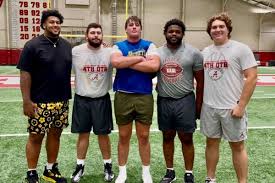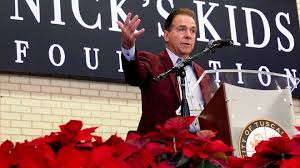In 2025, the Arizona Cardinals faced a recurring challenge that became a glaring issue throughout the season: hostile fan takeovers in their home stadium. Opposing teams’ fans frequently dominated the crowd at State Farm Stadium, creating an atmosphere more reminiscent of an away game than a home-field advantage. This phenomenon raised questions about the team’s performance, fan loyalty, and the broader dynamics of Arizona’s sports culture.
Here’s an in-depth look at why this happened, how it affected the team, and what the Cardinals might do to regain control of their home turf.
1. Performance Struggles on the Field
A key driver of fan disengagement was the Cardinals’ performance. With the team in a rebuilding phase and struggling to find consistent success, many local fans were less inclined to attend games. Injuries to key players, including quarterback Kyler Murray, contributed to on-field struggles, leaving the team at the bottom of the NFC West standings. A lack of compelling matchups and competitive games made it easier for opposing fan bases to swoop in and take over the stadium.
2. Arizona’s Transient Fan Base
Arizona’s demographic makeup also played a significant role. As a state with a large population of transplants from other parts of the country, many residents bring their loyalty to teams from their hometowns. This creates a fertile environment for opposing fan bases to buy tickets in droves when their teams visit. For example, games against the Dallas Cowboys, San Francisco 49ers, and Chicago Bears often felt like home games for the visiting team due to the sheer number of opposing fans in attendance.
3. Ticket Resale Market
The secondary ticket market exacerbated the issue. With the Cardinals struggling to attract their own fans, ticket holders—especially season ticket members—found it more lucrative to sell their seats to opposing fans, often at a premium. This dynamic gave visiting fans an easy way to secure tickets, while die-hard Cardinals fans often stayed home, frustrated by the team’s performance.
4. The Impact on the Team
The hostile takeovers took a toll on the Cardinals’ players and coaches. Hearing louder cheers for the opposing team during big plays, even at home, can be demoralizing. It also eliminated what little home-field advantage the team might have had. Coaches spoke openly about the challenges of motivating players in an environment that didn’t feel like a supportive home crowd, and players noted how difficult it was to find energy in a stadium dominated by opposing colors and chants.
5. Fan Discontent and Trust Issues
The hostile takeovers highlighted a deeper issue: the disconnect between the Cardinals organization and its fan base. Years of underperformance, questionable roster decisions, and unmet expectations had eroded trust. Many fans voiced their frustrations on social media and sports talk shows, calling for greater accountability from ownership and the front office.
6. Economic Factors
The economic realities of attending NFL games also played a role. With ticket prices, parking, and concessions representing a significant expense for families, some local fans opted to sell their tickets to visiting fans willing to pay a premium. This was especially true for high-demand games featuring popular teams with strong traveling fan bases.
Steps to Address the Issue
While the problem of opposing fan takeovers isn’t unique to the Cardinals, there are several steps the organization could take to mitigate it:
- Improved Performance:
The most straightforward solution is to win games. A competitive team naturally draws more local support, creating a sense of pride and urgency for fans to attend games. - Fan Engagement:
The Cardinals could invest more in community outreach and fan engagement initiatives. Strengthening the emotional connection between the team and its fan base could inspire greater loyalty and attendance, even during challenging seasons. - Ticketing Policies:
The team could implement ticketing policies designed to prioritize local fans, such as presale opportunities for Arizona residents or discounts for season ticket holders who commit to attending games. - Enhancing the Game-Day Experience:
Creating a more vibrant and engaging game-day experience could encourage fans to attend games regardless of the team’s record. Offering unique promotions, family-friendly activities, and exclusive in-stadium content can make the experience more appealing. - Building for the Future:
The organization must communicate a clear vision for the future. Transparency about the team’s rebuilding process and plans for success could rekindle hope among fans, ensuring they remain invested in the journey.
A Broader Reflection on Sports Culture
The Cardinals’ struggles with hostile fan takeovers in 2025 reflect larger issues in sports culture. In regions like Arizona, where teams compete for attention with beautiful weather, other entertainment options, and transplants’ loyalties, cultivating a passionate, engaged fan base requires consistent effort and results.
Final Thoughts
The 2025 season highlighted the need for the Arizona Cardinals to rebuild not just their roster but also their relationship with their fan base. Hostile takeovers at State Farm Stadium were a symptom of deeper challenges facing the franchise. With a renewed focus on winning, community engagement, and fan-first strategies, the Cardinals have an opportunity to restore pride in their home-field advantage and ensure that their stadium is filled with red and white for years to come.


